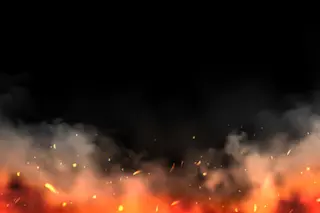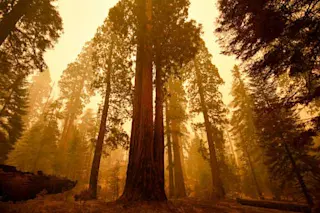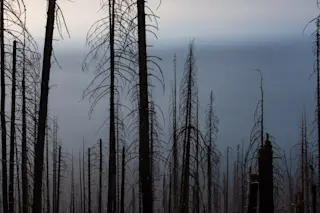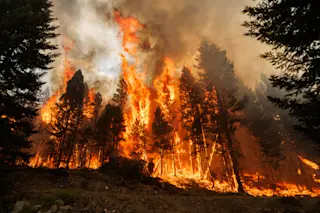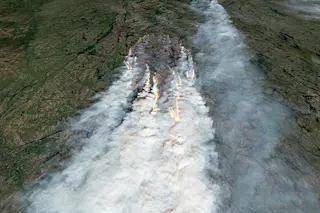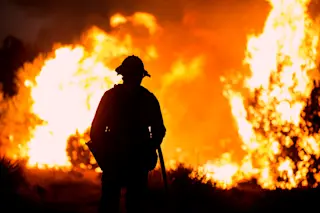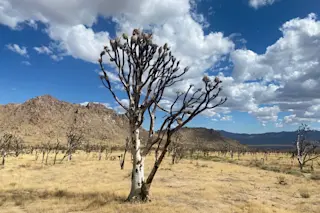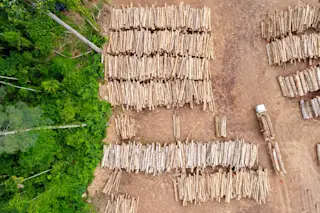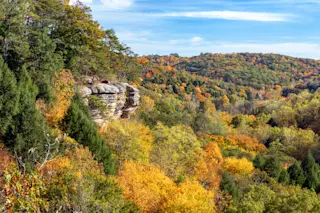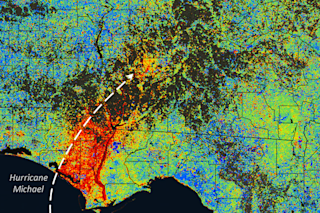In April 2022, forestry workers started a small number of fires in the Santa Fe National Forest near a remote mountain called Hermit’s Peak. The plan, part of a nationwide program of controlled burns, was to thin out the dense pine woodlands to reduce the risk of a bigger, uncontrolled burn later.
The team was aware of the two ways that wildfires usually spread. The first is via direct contact with nearby trees and grass, which is relatively easy to predict. But the second is much harder. Known as spotting, it involves burning embers, or firebrands, being blown away from the main conflagration and triggering secondary blazes further away.
An important part of the team’s plan was to place spotters downwind of the controlled burn so that they could immediately extinguish any unwanted blazes.
Out of Control
But the team significantly underestimated the distance that embers could travel, and the fire quickly spread out of control. Within days it became the largest wildfire in New Mexico’s history, destroying hundreds of homes and displacing residents over an area of 341,471 acres, about the size of greater Los Angeles.
That raises an important question. Theoretical studies suggest that firebrands should travel a few hundred meters downwind before they land. And yet firefighters have long observed spotting at distances greater than one kilometer. Why so much further than theoretical studies suggest?
Now they have an answer thanks to the work of Mohammed Farazmand, a mathematician at North Carolina State University in Raleigh, who has modelled the way that burning pieces of ember interact with the wind. He says that the heat from fires can set up travelling waves in the atmosphere. Firebrands can then “surf” on these waves further than anyone had thought possible. “This delays the firebrand’s landing, making extreme spotting distances possible,” says Farazmand.
Wildfires are well known to create complex patterns of wind when hot, rising air interacts with cooler air in the atmosphere. One way to model this flow is as a uniform movement of air. But a more complex scenario is that the fires create travelling waves in the atmosphere in which the air moves up and down at various frequencies as it travels horizontally.
Farazmand modelled both types of movement to see how they affected the transport of firebrands. His model assumed that firebrands initially have a random motion as they are buffeted by the turbulence of the fire.
His model suggests that if the wind is uniform, these embers can travel several hundred meters at a rate that depends on the wind speed, before gravity pulls them to the ground.
Fire Surfing
But things change dramatically if the wind forms even a small travelling wave. In this case, any ember that happens to match the speed of the wave can be picked up and begins to surf. It can then travel significantly further, even if the travelling wave has the same horizontal velocity as the uniform wind speed.
“We show that traveling waves, with reasonable wind speeds, can significantly increase the landing distance,” says Farazmand. “The traveling wave can lead to spotting distances which exceed one kilometer.”
That’s a useful conclusion that will help to inform the way controlled burns are policed in future. The message is simple: spot fires can start at least a kilometer downwind from the main burn. That kind of distance will significantly increase the size of the area that needs to be patrolled and the number of people required to do it .
But if it prevents the kind of runaway conflagration that hit New Mexico in 2022, the price will be worth paying.
Ref: Extreme firebrand transport by atmospheric waves in wildfires : arxiv.org/abs/2411.13275


